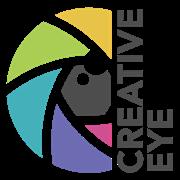CREATIVE EYE







As the Creative Eye Group continues to grow, there have been a number of changes over recent months: a new name, a new logo, the introduction of a regular eNewsletter - and now, a brand new look to our regular Creative Eye Group magazine. In taking on the role of editor, I must thank my predecessor, Barry Freeman for handing over a well established and already enjoyed publication. I hope, that during my tenure, I can do it justice. We’ll be featuring Barry’s career and work in the next issue.

Putting this (my first) edition of the magazine together is a reminder of the breadth and scope of our membership who see the world through a personal lens. With a limitless subject matter there is inevitably some overlap with other RPS special interest groups - and nobody is claiming a monopoly on “creativity” - but read on to peer into the minds of our Creative Eye Group membership.
Steve Varman, EditorFacebook facebook.com/groups/rpscg
Chairman and Exhibition Co-ordinator
Moira Ellice ARPS creative.chair@rps.org
Treasurer and Webmaster Barry Collin LRPS CPAGB APAGB creative.web@rps.org
General Secretary Gillian Beckett ARPS creative.secretary@rps.org
Exhibition Secretary Matthew Clarke BPE3* creativeimage@rps.org

Membership Secretary Bill Coles LRPS creative.membershipsecretary@rps.org
Barry Freeman ARPS DPAGB APAGB Vice Chairman and Assistant Exhibition Co-ordinator Nigel Rea ARPS
Events Organiser Jeremy Rodwell ARPS creative.eventorganiser@rps.org

Publications Editor & Facebook Administrator Steve Varman LRPS creative.publications@rps.org
4
12
13
15
20
22
24
Or search Facebook for ‘RPS Creative’
Flickr
flickr.com/groups/3510780@N20/pool
Or search Flickr for Creative or RPS
Editor creative.publications@rps.org
Website
www.rps.org/special-interestgroups/creative-eye
Cover image: Nature’s Diamonds by David Jordan FRPS (full story on page 4)
Tell us about your stories, projects and distinction successes. If you would like to submit something for consideration, for either the eNewsletter or Creative Eye magazine, please contact Steve Varman at: creative.publications@rps.org
© 2018 All rights reserved. Apart from storage and viewing in its entirety for personal reference, no part of this publication may be reproduced, stored in a retrieval system or transmitted in any form without prior permission of the copyright holder. The Royal Photographic Society, the Creative Eye Group and the Editor accept no liability for the misuse of any content or for any breach of copyright by a contributor. The views expressed in this magazine do not necessarily reflect the policies of the Royal Photographic Society or the Creative Eye Group. Unless otherwise indicated, all images are from, and copyright of, the authors.
The last three months have been most eventful, beginning with an excellent Members’ Day in May. It was good to see the large number of participants, many travelling long distances, taking part in the event. David Robinson opened the day with an excellent presentation on Adobe Lightroom, giving us tips and helpful advice. This was followed by members showing their inspirational Distinction panels, talks by members showing their thoughtprovoking work and ideas, and an interesting talk by Bill Spencer, describing how he created his dramatic award-winning image “Lightning Storm at Port Leven”. The day ended with the Discussion Group members talking about their recent projects.
After a very successful opening of the Exhibition at Wingfield Barns, which finished on one of the wettest Easter Mondays in Suffolk for years, the Exhibition travelled to the Smethwick Photography Society’s Headquarters in the West Midlands and went on display at the beginning of May. At the end of the exhibition the prints were stored away in their boxes, ready for a possible second showing, before being sent to the Edinburgh Photographic Society for its final display. Unfortunately, during the Bank Holiday weekend in May, the West Midlands was hit by flash floods and the Society’s clubrooms, where the Exhibition was being stored, were badly flooded. Due to the quick action of Roger and Judith Parry, who rescued as many prints they could, you will be pleased to hear that we are
On page 21 of issue 76 of the Creative Eye magazine, we mistakenly showed the author of ‘A Walk in Time’ as Peter Hallem instead of Jeremy O’Keefe ARPS. Apologies to both Jeremy and Peter.
able to continue with the Exhibition’s planned tour to Edinburgh. Visitors will be able to view the complete exhibition on the monitor.
In addition to our usual venues, the Exhibition will, hopefully, be shown at one of the Society’s overseas chapters’ main meetings at the end of the year. As always, it is almost impossible to find suitable gallery space to display prints. So, to begin, the Print and Projected Image Exhibition will be shown on a screen.

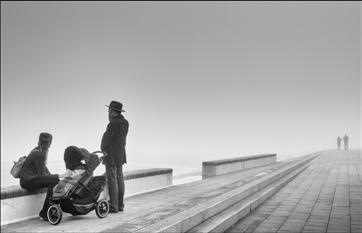
After many years producing the Creative Eye magazine, Barry Freeman retired from his role as editor in May, with the Exhibition edition being his last, and we thank Barry most sincerely for his loyalty and dedication to the Group.



July launched the Group’s first field trip. Jeremy Rodwell did a splendid job of organising a day out at Houghton Hall and Gardens in Norfolk. Many of Damien Hirst’s sculptures and paintings were on display in the Hall and grounds, offering fabulous creative photographic opportunities. As well as a good number of attendees, we were honoured to welcome Past President of the Royal Society of British Sculptors, Professor Brian Falconbridge, who joined us for the day and also judged the photo competition.
Several events will take place before the end of the year. Leigh Preston FRPS will be presenting a lecture at Foxton in October. We also have two field trips in October - one to the Royal Botanic Garden Edinburgh and the second to Kew Gardens London. A competition, to be judged by Ann Miles FRPS, will open to all participants. Member, Nat Coalson ARPS, will be giving a lecture “Abstract Photography as Fine Art” at Smethwick Photographic Society in December.
My first experience of visiting Kew Gardens was in February 2007. We had been visiting my stepson in London and although it was a cold rainy day, so it seemed a good idea to visit the gardens at the time. I have always been a ‘found detail’ or as Ansel Adams described them as ‘extractions’ type of photographer. At the time I was not aware of the photographic potential of Kew Gardens so when we arrived there it was a revelation, images just appeared from nowhere! This visit started me on my path of ‘found’ botanical photography, which culminated in my Visual Arts Fellowship in 2014 and successes in the 2016 and 2018 International Garden Photographer of the Year competitions.
Kew Gardens does offer the photographer a wide range of subjects in its 300 acres, many of them offering a wonderful mixture of textures, shapes and colours, the bare bones of photography. We found that if we were not careful, we can spend most of the day in the iconic Palm House, following the shifting shadows of the plants and windows around the building. There are some surprising ‘small’ areas to work in, such as the windows at back of the Waterlily House, that can yield amazing images.
You do not require particularly sophisticated photographic equipment to obtain good images from Kew Gardens, the ability to focus closely is highly desirable and having a reasonably good zoom range will allow you to obtain surprisingly good results, especially in the buildings. A bag full of large and heavy exotic lenses will not guarantee excellent results, it is all about seeing and having a sound understanding of how light works in creating striking images.
We have visited Kew Gardens many times since 2007 and we are still finding new subjects to photograph there. In recent years we have become

‘Friends of Kew’ which gives us unlimited access to the gardens for £68 per year. It also allows us to enter the gardens from 8am between May and September, two hours before the masses arrivewonderful!
The Creative Eye Group is having an outing to Kew Gardens on Saturday 27th October. My wife Joan and I will be acting as guides for the day. We will try to help the members of the group who attend to find







interesting and, hopefully, effective images. If you wish to attend this outing, we will be meeting at the Victoria Gate at about 10.00am. Please let us know that you are intending to join us by e-mailing us at: daveandjoanjordan@yahoo.co.uk.
If you are curious about the images that can be taken at Kew Gardens have a look at the Kew


folders on my Facebook page: David Jordan FRPS Photographs. The images included in this article range from some of the first images taken in February 2007 to those taken on our last trip in April 2018.
I look forward to seeing you there.


Have you ever found yourself in a great location but the sun is high and the light is harsh and contrasty? Definitely not the “Golden Hour”! Well, digital infrared photography could give you the opportunity to shoot great images in just such conditions.
In this article I will cover a little history; explain what infrared photography is; explore how you might get started; consider some options; and look briefly at post processing.
Infrared photography was developed for military/ scientific use in the early 1900s, using film of course, and became commercially available in the 1930s when photographers started to use it creatively. The film is now hard to get and is not easy to use and process, so its popularity declined. It has enjoyed a resurgence thanks to digital technology with a many monochrome photographers considering it an essential part of their landscape and architectural work.

Digital infrared photography uses digital technology to record light wavelengths below the visible spectrum. Note, this is by recording reflected infrared light and is not thermal imaging. The results are that skies record near black, foliage and living organisms record near white. With stonework and brickwork the tone depends on the amount of Infrared light reflected. Metalwork will usually record near black unless painted in a bright, reflective colour. Infrared is fantastic for skies and cloudscapes, sometimes revealing clouds invisible to the naked eye.
The characteristics of Infrared film were a very grainy image with a soft “glowing” effect. Digital Infrared produces a low grain (subject to ISO setting!) and very sharp image though some post-processing is required. When digital Infrared first appeared photographers usually used post-processing to recreate the grainy,

glowing effect of Infrared film. Though these effects can still be produced, the desire of modern judges and selectors for very sharp, low grain digital images means that most Infrared images you see will take full advantage of the sharpness and low grain of digital images. The traditional look is still a creative option.
The quickest way into digital Infrared is to use oncamera filters either screw-in or system – an R72 filter is the usual choice. The filters are very dark and require long exposures - a tripod will be essential and there may be focusing issues. (The more mature photographers among us may remember pre-digital lens with a guideline for Infrared focusing). Filters in a range of thread sizes are readily available from Amazon and eBay.

The second and best option is to have a digital camera converted for Infrared. This will allow for normal exposures and the camera can be hand-held with no focusing issues. While not cheap, camera conversion is, in my view, very good value. It can give a second life to an older digital camera no longer in use. I use my Infrared cameras nearly as often as my normal cameras.
Cameras can be converted at home, but it is not a trivial process (if you fancy tinkering with an old camera have a look at: www.lifepixel.com/tutorials/infrareddiy-tutorials - that should put off all but the most determined!
 DAVID RUTTER LRPS
DAVID RUTTER LRPS
Being a tormented creative always trying to go one better, I thought that this lovely studio shot of Amelia Mary was really jolly nice but needed something more to lift it – so the creative juices got going!
I started by sampling the standard background, which was appearing like smoke or mist and spread this in front of Amelia’s dress which put her in a low lying fog – great – but then it struck me that this could be mist from a lake scene, so what did I have in my archive from a lake?
Of course, a heron from one of the lake areas in Battersea Park – so this delightful creature was brought in and with a touch of Photoshop puppet warp to get his head looking at Amelia and with his beak mimicking the arm line I spread the mist around him and then worked on the light and shading of the bird to match the main image.
The final image I feel has an element of my humour and an element of decent studio photography which combine to drag a “nice picture” into the “ooh” or “aha” world of hopefully memorable images.
Looking back, I believe my approach to photography today is deeply rooted in the early connections I made to the wild landscapes I was drawn to as a child.

Although I grew up in the home counties, school field trips to an outdoor centre located in the Brecon Beacons were what first opened my eyes to the wild beauty that lay beyond my suburban back door.
I still remember waking up on my first morning in Wales, heading outside and climbing onto a stone wall. From here I looked out across the valley below and stood mesmerised by the strands of mist that were strung out like giant hammocks between sentries of pines; custodians of the wilderness beyond. This is the first landscape shot I recall taking, and as I did so, I remember feeling an
‘Every time we look at a photograph, we are aware, however slightly of the photographer selecting that sight from an infinity of other possible sights... The Photographer’s way of seeing is reflected in his choice of subject… Yet, although every image embodies a way of seeing, our perception or appreciation of an image depends also on our own way of seeing…’
John Berger - Ways of Seeingoverwhelming sense of belonging. This was my first real call to the wilds and the beginning of a career I didn’t yet know I’d one day have
the privilege and opportunity to pursue.
My first 35mm camera was a fixed lens Konica film camera that accompanied me on various adventures up mountains, down rivers, traversing rock faces as well as deep underground. Given the extreme environments this camera was exposed to, I always had a firm hold of it since access and exposure to such places invariably meant I was either commando crawling through cave systems, clinging onto rock faces, or paddling down rapids. It also meant that from the beginning, I was forced to shoot from less than ideal positions, composing shots from unconventional angles. Immersed in these natural surroundings as an active participant, I soon felt very much
a part of them and began to photograph them from a more intimate perspective, intuitively from within, not just as a distant observer.
In those early days of taking photographs I was simply composing a shot, focusing and shooting; I knew nothing about the technical side of photography or indeed the creative opportunities that such an understanding could open up. However, when photography became more of an obsession than simply a point and shoot recording of my travels and adventures, I realised that it was as much a left brained science as a right brained creative process. So whilst I have had to grasp the physics that is photography, it’s something I have struggled with and I have always relied on a more intuitive approach to yield the results I have sought to capture.
I doubt anyone would describe me as a conventional landscape photographer. I have a minimal amount of equipment and rarely use a tripod. I like to feel free, unencumbered and able to explore without too much restriction. Holding my camera in my hand, it becomes an extension of me as opposed to a separate entity and I feel far more connected to the landscape that way. My set up and composition is therefore dictated by the environment I have chosen to explore and what draws my eye. I also enjoy the challenge and rewards that being outdoors presents.
With my body contoured to the frozen ground or leaning up against a tree; the texture of the bark pressing into my skin as I brace myself against its limbs to take a shot, I feel better able to transfer what I feel and sense as well as what I see, to the image I then frame.
Time disappears when I am behind the lens; photography becomes a meditative process and one in which my interaction with and connection to the landscape is



all important, intuitive and totally in the moment.

Intentional Camera Movement (ICM) and Multiple Exposure (ME) photography both lend themselves to shooting hand held and both enable me to capture not just an illustration of the world around me but create a visual interpretation of it.
When shooting ICM images, I take account of the light, colours, patterns, textures, contours, and often spend hours observing how the elements continue to shape, nurture, erode and embrace the landscape. Wild weather tends to go hand in hand with wild landscapes which in turn provides limitless opportunities for ICM

compositions particularly when the wind is blowing. Time becomes irrelevant and I can enter an almost trance like state as I lift my camera to my eye and begin to capture not only what I see but also what I feel. I always shoot on manual adjusting my WB, exposure, aperture and ISO as well as adjusting both the speed with which I pan and the direction and angle in which I choose to move the camera. However, for me the process is not a formulaic one, it’s an intuitive one, dictated not only by the connections I’ve made to the landscape but also by what the landscape has decided to reveal to me.
There have been times when I have been so overwhelmed by a landscape that I’ve had to put my camera down believing that I

simply can’t do it justice. However, this is where I found that ME images can help capture more of the complexities of an intimidating landscape by integrating and often reconciling the differing elements such as the light, colour, contours, tonality, mood and moment into an abstract expression for the viewer revealing its true spirit of place in either one or a series of related images.
My ME images are composed intuitively by eye, hand held and in camera, framing and overlaying the shots. Finding my subject, I let my eye guide me exploring the landscape through my viewfinder, locking into the flow of what feels like a very contemplative process where my way of seeing is ultimately shaped by that all important connection to the landscape.
My early exposure to such wild places together with my passion for outdoor photography, has instilled a deep respect and appreciation of the natural world around me which has in turn led to an increasing desire to want to conserve and protect it.
I believe photography has an increasingly important role in the conservation of our wild places and now see it as a way of connecting others – both physically and emotionally - to the landscape and encouraging them to want to conserve it for future generations to enjoy and explore.
Justine Ritchie is a Freelance Photographer based on the Isle of Eigg in the Inner Hebrides. Her work is very much inspired by wild landscapes and reflects not only the natural world but also man’s interaction with the environment. Her images encompass both classic and more abstract landscapes and as such she sees her images as not just and illustration of the world around her but also a visual interpretation of it. More of Justine’s work and the services she offers can be seen on her website: www.justineritchie.com




Abstraction is an important genre in the fine arts, and abstract imagery makes great interior decor. But creating interesting, beautiful abstractions with a camera presents many challenges, not least of which is finding an enthusiastic audience! In this special seminar you’ll gain insight to a refined process for creating, exhibiting and selling abstract photographic art: from subject selection and capture, to processing, printing and mounting, through to final presentation. You will learn key tactics for producing and exhibiting photographic art, providing opportunities for photographers working in all disciplines.
Nathaniel Coalson ARPS ASICIP is an American photographic artist based in the Midlands, England, working and exhibiting internationally. Nat’s art is held in private and corporate collections around the world and has received numerous awards and accolades. He is an Ambassador for Adobe, Sony, Epson and X-Rite and the author of popular books on photography and
digital imaging. As an acclaimed teacher, coach and mentor, Nat has taught photography, printing and imaging to photographers working at all levels and across all genres. To see Nat’s work and for more information visit www.natcoalson.com.
Itend not to pre-visualise a potential creative image at the taking stage. Rather, I look at the image on the monitor and proceed from there. In other words, I tend not to recognise the creative potential before I press the shutter, but now I have joined the Creative Eye Group of the RPS, perhaps this will change?
My image of Canary Wharf was the start in attempting to use software to achieve a more artistic approach, although in this case the natural lighting at the time proved crucial. I used layer masks to retain the sharpness in the immediate foreground to provide a point of focus and depth to the image.

Another technique is using one image, but reversing it, possibly enlarging it and then combining with the original image. Bridge Impression is an example of this.

Combining two different images, each not having much impact on there own, but combined achieving a potentially powerful image, my Oxford and Rope Factory, Chatham Dockyard images are my most successful examples of this. However, careful selection of each individual image is vital. My personal experience is that one image should dominate and the other just compliment it. Otherwise, the finished image can become confused and lose visual impact and many of my attempts have ended thus.

Just before I joined the Creative Eye Group of the RPS, a camera club member lent me a copy of “Creative Eye” and I noticed a reference to “Fractalius” I particularly liked the effect, and decided to investigate further. I downloaded a trial version, liked the huge range of adjustments available and the effects that were created. I soon purchased a copy and this now is one of my most used creative tools.
My objective using that software, is to create an impressionist feel to a photograph, but retaining enough of the original photographs resolution around the principal subject. This has the benefit of isolating the subject, whilst the remaining part of the picture remains like an impressionist painting. In some images, the impressionist part may only be a relatively small area, typically around the perimeter, in other images the impressionist part is larger, until it becomes dominate, for example Canal near Cassiobury Park.

Naturally, the layer masks in Photoshop are vital, and enable me to decide which part of the image I want to have the impressionist effect. For example, in the Fresh Pasta image this is placed on the right of the image.

In Field of Daisies only the daisy on the left remains sharp.


CELEBRATING THE LIFE OF A WORKING PORT

The Brighton-based TIDES group is staging an outdoor exhibition of new work on Brighton Beach as part of the 2018 Brighton Photofringe. The TIDES group are Creative Eye Group member Audrey Marshall ARPS, Colin Miller ARPS, Colleen Slater ARPS, David Wilsdon ARPS, Ellen Miller LRPS, Leon Bellis and Steve Boyle ARPS. They are talented photographers based in the Brighton and Hove area. Each has a very distinctive individual style and they come together to work on projects exploring aspects of local life. Their latest project is called ‘Port Life’ and it highlights the working port of Shoreham, located to the west of Brighton. The photographers capture the diversity of life in the harbour basin, from the commercial operations and the people who work in the port to the leisure and beach areas.
The TIDES group had a very successful exhibition as part of the Brighton Photofringe in 2016 in the same beach location. The exhibition was originally staged for the month of October 2016, but it became such a popular sight that Brighton & Hove City Council were happy to let it stand for over a year. The exhibition attracted interest from a wide range of organisations and visitors. Many people interacted with the images, moving around the space, in daylight, at night and in all weathers. Some incorporated the exhibition images into their own pictures or videoed themselves walking around the display and posting the results on social media. Comments from viewers were extremely positive:
“Just to say went to see your photographic exhibition when I had a friend down for the day - we both really enjoyed it! Love the fact they’re photos taken of where they were shown and liked the way they were displayed.”
“We really enjoyed the beach exhibition. Many congratulations for pulling off such a prominent and unique display... well suited to the location and hanging set up.”
‘Port Life’ will take place from 29 September 2018 to 28 October 2018. The location is Brighton Beach, off Kings Road, BN1 2GR.
For more information please contact: Audrey Marshall: audreymarshall54@gmail.com 07443 539954 or Steve Boyle: steveboylephotos@gmail.com 07505 231013

The back streets of Chania used to consist of a mixture of ancient wrecked houses, shops, workshops, and even palaces; now most of it has been redeveloped into tourist accommodation and wine bars.
In the days when I wandered those streets, camera in hand, there were all sorts of bits of colourful wall lying around, inside and outside the ruins. And the surfaces had interesting patterns caused by rain, sun, earthquakes, vandalism, plant life and general rot. That’s what I photographed, usually with a cheap and cheerful camera – they didn’t last long in that very dusty atmosphere.
Often I thought I could see “forms within forms” on the surfaces – odd shapes and patterns organically created by the elements and time.
When I was making these photographs I had no thoughts of creating an ARPS panel from them – they were just interesting – and anyway I was then working towards my LRPS, which itself took a lot of really enjoyable time and effort, entirely disconnected from these “wall art” images.
As I learned more about photographic processing, I began to realise that by using Photoshop with plugins like Topaz Labs and Studio, and the Nik Collection, I might be able to “extract” those intriguing shapes and forms from my now quite extensive wall art collection, and make something of them, perhaps even an “A” panel.
The most useful tool was Topaz Adjust 5. This is easy to use, and I tended to concentrate on the filters from the Classic Collection. You open your image in Adjust 5, then run through the filters one by one, seeing the often amazing
changes that just happen. Then you can fine tune the filters just as you like. And there were plenty of other intriguing plugins to try, including Glow and Detail Extractor. Some were really effective and creative, others less so.
One by one I created images that looked interesting and perhaps had some artistic potential. They didn’t look much like the original ancient walls any more, that was for certain.
Eventually, after months of fine tuning, there were 60 or so usable images to start the very long process of extracting a possible “A” panel from. That took more months, with two RPS Advisory Days and loads of guidance and encouragement from my elders and betters, on everything from choice of the right images at the right size (we settled on 8” x 5.3”), to the right printing paper and mount board, and how to arrange the panel itself for best impact.
It finally ended with a stressful but thankfully successful day before the Fine Art Panel at Bath in March this year. It is perhaps worth saying that though my panel was passed, one of the assessors didn’t like it, and another felt that though they did like the images, the printing paper – Titanium Lustre for “pop”
- was the wrong choice and should have been a white matte art paper to give the feel of chalky old walls. Other assessors did like the work, thank goodness. It was all very valid criticism, but so hard to listen to at that critical point – I really thought it was thumbs down!
For some years I lived in Chania, the ancient Venetian capital of the island of Crete.
The old streets were lined with tumbled-down stone and timber palaces, houses and shops, abandoned as ruins.
In the colourfully painted plaster walls - still vibrant though broken and transformed by sun and rain and the passing centuries - I could see strange pictures and forms within the patterns of smeared pigments and leaching minerals.
My photographs are intended to reveal some of these fleeting images.











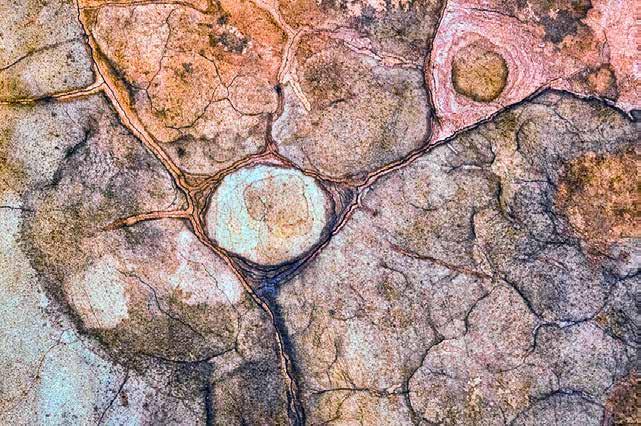

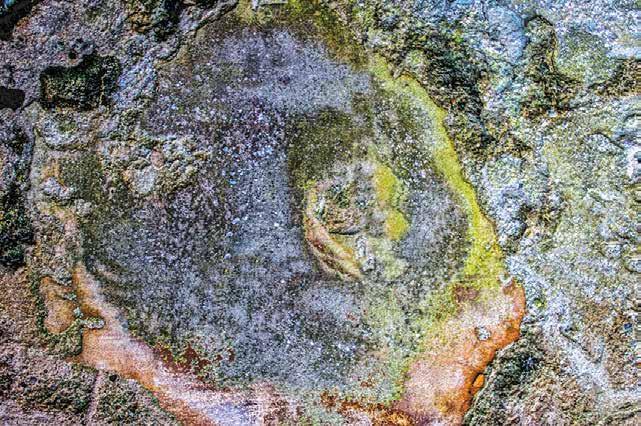
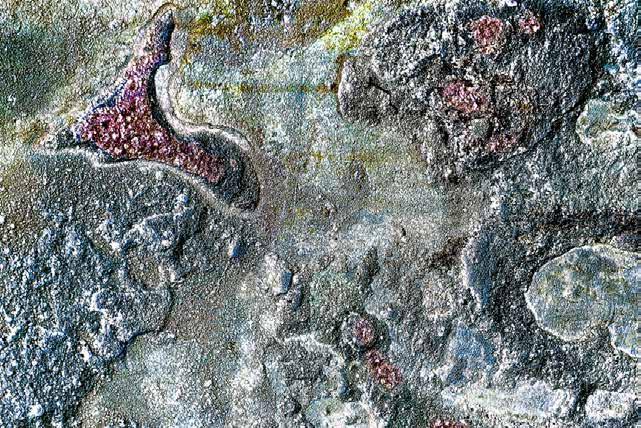
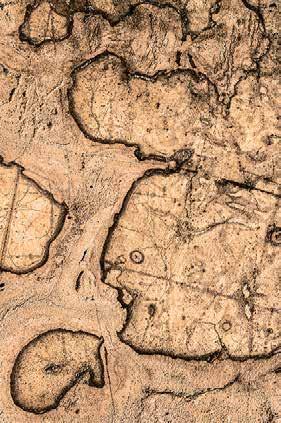

Having gained my CPAGB in Nov 2016 I realised that simply producing 15 individual images for an attempt at DPAGB was not particularly appealing. I wanted to try something different with fresh challenges. It quickly became apparent that the RPS distinctions provided that. In particular having to create a cohesive panel comprising of images of merit and good print quality.

However, I was not sure if the quality of my work was up to the required standard and I certainly had precious little idea of producing a panel, so the first task was to explore these key areas. Happily, the RPS East Region had organised a workshop at Wymondham in Feb 2017, seemingly just for people like me being open to non RPS members and covering those topics. That proved to be immensely valuable and gave me confidence that LRPS was achievable.
So, by now, having joined the RPS I attended an advisory day in June 2017 as an observer. This was an excellent learning experience and work on the panel started in earnest. A very positive advisory day on Nov 2017, as an active participant, led to the booking of my assessment day.
During this final period of selection, processing and printing I received superb advice from RPS members and friends from my club, Colchester, which, fortunately, included RPS Fellows. All given with tremendous generosity of time, wisdom and candour. This aspect was so important to me.

My final panel had at it’s core my favourite subjects of flowers and seascapes/landscapes. I added, a church interior and some portraits including, what turned out to be an important anchor image in the overall panel balance, one of my daughter taken during a rare visit home. These additions were
essential in demonstrating the required variety of techniques. Equally vital was consistency of post processing and printing to give the panel that essential cohesive feel across colour and mono images.

Ultimately, I attended the assessment day feeling that my panel fairly represented my work, albeit increasingly apprehensive and doubtful of success. Happily,
those doubts proved groundless and being second in the running order I was able to relax and enjoy other applicants panel submissions.
Overall an enjoyable and rewarding experience.
So, ARPS next? What that would comprise of remains a mystery although several people have suggested I develop my flower portraits. We shall see.







It can be a lonely feeling being an overseas member but the remedy for that is to get involved. So, what can I do you may ask? Firstly, you can join Special Interest Groups, which does cost extra but most publish excellent regular magazines and/ or e-newsletters. There are 14 and each of them have sites within www.rps.org that can cater for your photographic interests. Groups often have galleries or blogs where you can post images and get feedback. You may be able to join a group e-circle which allows you to have contact with other members, wherever they are and get feedback on your pictures.
You could also contribute an article to a group magazine. There are also competitions to enter both through groups and the RPS centrally, for example the 365 monthly themed competition. Finally, you can join an overseas Chapter, http://www.rps.org/ regions-and-chapters . The Swiss Chapter, of which I am now Organiser, was started in 2012, http://www. rps.org/regions-and-chapters/chapters/switzerland . We have regular meetings and run our own monthly e-circle. We even have members in France and Italy. Of course, as overseas members we do miss out on Group and RPS activities in the UK. Though it is not far from Switzerland, for our friends in Australia, North America and Asia its long way to travel!

The Society is making efforts to encourage and make easier distinction submissions and I am sure more will be done in the future to support overseas members and make the RPS more relevant to them.
 Rob Kershaw PhD ARPS www.robckershawphotography.com
Rob Kershaw PhD ARPS www.robckershawphotography.com

Having belonged to the RPS Digital Imaging Group over a number of years, it was obvious that at some stage I’d consider joining the Creative Eye Group, which I did.

A couple of months ago I happened to view the lovely magazine “Creative Eye”, brought over by a very good friend of mine, Elaine Herbert ARPS (who is currently the Honorary Secretary of the overseas RPS Australian Chapter), also joined the Group in March 2018.
Prior to this, I’d belonged to the Contemporary Group of the Australian Photographic Society (APS), whereby members are encouraged to submit images confining to this subject. Perhaps its worth mentioning here that the Group published a hard-cover edition titled “Free Expressions 2017” showcasing members’ work.
I understand there are now seven Australian members belonging to the Creative Eye Group. Besides Elaine, I’m not sure where the others are located and as such, cannot vouch for their activities. No doubt I shall look forward to participating in the Group’s activities by way of submitting images.
An impressive turnout of members and friends of the RPS Creative Eye Group met at Houghton Hall near King’s Lynn in Norfolk on a gloriously sunny Sunday 8th July for the Group’s first organised Field Trip.
This was a day with challenges – a wide range of Damien Hirst’s controversial colour space paintings to be considered in the Hall, Hirst’s gigantic sculptures in the grounds to take in, plus an RPS photo competition to make top creative images for.
With the hundreds of acres of landscaped gardens showing off the sculptures, and then the beautiful 5-acre walled garden with its own works of art and wonderful flower and vegetable beds, this was also a day hard on the feet.
But everyone enjoyed themselves, any hard work made easier by frequent stops for refreshments at the two cafés.
It was really great to see so many keen members, and so many friends, joining us. For me, some people had until then been just names from RPS publications, and to be able to put faces to those names was wonderful.
Hirst’s colour space paintings – the “Spot paintings” – seemed to provoke a “like it or hate it” reaction among our members. But as the colour space paintings had replaced all the usual ancient paintings of venerable ancestors in the State Rooms and bedrooms, one could not avoid the question of judging their possible relationships to the building and its furniture and decorations.
Outside, the vast Hirst sculptures seemed more accessible and enjoyable, though they did make creating good images pretty difficult simply due to the scale – which lenses to use and how to frame the subjects
becoming major decisions.
The open photo competition organised by our Group Chair, Moira Ellice, and judged by Professor Brian Falconbridge PPRBS, should give a good idea of what we ended up seeing through our Creative Eyes!
It was a very enjoyable day out and well worth the long journey up to Norfolk – some travelled more than two and a half hours to get there – and a nice opportunity to get together and meet new friends as well.

David Ashfield LRPS ( Overall winner )
I am delighted that my image has been selected by Professor Falconbridge. The visit to Houghton Hall and the Damien Hirst exhibition provided such an abundance of photographic opportunities that I found it impossible to choose a single photograph to convey my impressions of the day and, as I explored, I found an image forming inside my head. In fact, the concept was sufficiently clear that most of the shots I used were taken with the end result very much in mind. It was then a simple matter of extracting the relevant sections of each of the images with a variety of selection techniques before blending them together and applying a variety of ‘cleaning’ operations to improve the final image. The final picture is the result of six images, twenty Photoshop layers and several hours editing.
Prof. Brian Falconbridge PPRBS ( Judge )
Houghton Hall, with its Palladian splendour, expansive landscaped grounds and exquisite walled garden, offers a wealth of opportunities for creative photography. When linked to the brilliantly sited monumental sculptures by Damien Hirst and the intervention of his paintings within
the house, creative potential is multiplied. Competition entries reflected a pleasingly full range of responses, with the majority incorporating aspects of Hirst’s work, especially his sculptures. Most were polychrome, with both deep perspective and close-up photography being explored, along with the representational and the painterly abstracted, together with many foregrounding tonality entries confirmed excursions into the full spectrum of offerings from assertive fantasy to the quietly understated, with an equal division between ‘portrait’ and ‘landscape’ formats. Judging across diverse points of view and interpretations presents its own challenges but my decisions in assessing have been made on the basis of seeking a distinct and imaginatively composed visual responses conveyed with clarity of purpose. I have therefore been drawn to images that, in my opinion, present versions of extremes within each genre, be they highly dynamic or very understated and subtle and all points in between. I have tried not to be influenced by my own ‘taste’ in favour of maintaining strict objectivity in reaching my conclusions. All photographs were considered merely with title with names of photographers being removed for the purposes of judging.

(Previous page)
Judge’s comment: I have chosen this image on the basis of its outstanding and comprehensive response to the unique opportunity contained in the grandeur of the setting that is Houghton Hall featuring Damien Hirst. In “Daydreaming” Hirst’s sculptures are redistributed to create an imaginative new narrative, one which takes on the air of a mythological history painting depicting a plausible drama - the exact details of which are open to fanciful speculation. The composition is well balanced and wittily strategic, where new relationships of character are proposed to successfully contrive to engage and hold the attention of the viewer.
HIGHLY COMMENDED
steps and the subtle variations of colour and tone they contain. The steps form the perfect backdrop to the intensity of the colour of the petals inviting reflection on the contrast of their utter delicacy against the durability and antiquity of the stone steps, their fleeting impermanence and the fact of transience itself.
Judge’s comment: I was much taken with the sheer visceral and richly painterly opulence of this captured image. Bold, dynamic and uncompromising, it was derived from close observation of the sculpture “Scholar Rock” by the Chinese artist Zhan Wang. While it may be understood as being entirely abstract I also note the image’s ambiguity in its potential to anthropomorphise elements. This is principally evident in the dominant core of the piece and which may be seen as being somewhat face-like - with shades of The Scream by Edvard Munch even.

HIGHLY COMMENDED
Judge’s comment: “Against stone”, a close-up of stone steps incorporating a casually posy of sweet pea petals, combines orderly horizontal bands bisected by a more diagonal line of shadow with petals transfixed by the heat and light of the sun. The simplicity of the finely balanced composition of light and shade encourages one to savour the texture of the stone

HIGHLY COMMENDED
This monochrome image is exquisitely restrained, composed with highly restricted tonality, presenting an image of subtle tenderness where the fingers and toes begin take on the delicacy of bleached and fragile fronds, thus opening up new possibilities for poetic interpretation.

FRPS EFIAP MPAGB FIPF
Saturday 6th October 2018 (10:00am to 4:00pm)
RPS member £10:00
Non-member £15:00
Foxton Village Hall, Hardman Road, Foxton, Cambridge CB22 6RN
Leigh will be talking about the ‘Art of Seeing Pictures’ in the morning and after lunch (please bring a packed lunch) we will be treated to images of street life; photo journalism; travel; portraiture; landscapes and much more.


To book a ticket please go to rps.org/creativeeye click on ‘Events’, select the Leigh Preston event dated 6th October 2018 and choose ‘Book by Post’ or ‘Book online’.
For more information please contact event organiser Barry Colin LRPS CPAGB APAGB creative.web@rps.org
Wednesday 17th October (10.30am to 4.00pm)
The RPS Creative Eye Group and the Edinburgh Photographic Society Field Trip.
Join us on this interesting day out, exploring the beautifully landscaped grounds and magnificent glasshouses, where you will find many photographic opportunities. Admission to the Gardens is free, but glasshouse admission charge is £6.50 (Concessions £5.50 - RBGE members free).

Meet at The John Hope Gateway at 10.30am –11.00am
Royal Botanic Garden Edinburgh, Inverleith Row, Arboretum Place, Edinburgh EH3 5LR.
(Details of the trip will be available on the Creative Eye Group’s website and in September’s edition of the Creative Eye magazine)
If you would like to book a place on this trip, please contact Moira Ellice ARPS at creative.chair@rps.org
Saturday 27th October 2018 (Meet at 1:30pm)
The Creative Eye Group is organising a practical activity for members at Kew Gardens on Saturday 27th October 2018. It will be led by David Jordan FRPS and Joan Jordan ARPS; David has been a Finalist in the International Garden Photographer of the Year in 2016 and 2018 and both have enjoyed many visits to Kew and are familiar with its photographical potential.

The day will include visiting the key glasshouses of this world leading botanical garden: The Palm House; the recently re-opened Temperate House; the Princess Diana Conservatory; and the Water Lily House, in addition to other locations on the site. Photographic assistance and general guidance can be given to anyone who requires it.
close focusing capability would be very useful. If you are using a DSLR or mirrorless camera, then a lens which covers a range from moderate wide angle to a medium telephoto is often very effective in this location (for example: in APS C format, a good range would be something like 18mm to 135mm). If you have a dedicated macro lens, then it is worth bringing it along. You are not allowed to use a tripod in the glasshouses at the weekends, but you can use it on other locations outside these buildings if desired.
Transport and Accommodation:
Kew Gardens is easily accessed by rail, underground, bus and by road, with limited parking outside the gardens on the road. There is a small car park as well. If you want to stay in the area before or after the event, then we recommend the Travelodge at Kew Bridge, which has also got very good and reasonably priced (£6.00 per 24 hours) parking facilities. Alternatively, there is a Premier Inn nearby which has limited parking facilities. You will be responsible for your own transport arrangements to and from the venue and any overnight accommodation that you choose to book.
Information about Kew Gardens can be found at kew.org. If you choose to participate in this trip, then please email daveandjoanjordan@yahoo.co.uk, so that we will know who to expect on the day.
Thursday 13th December 2018 (Starts at 7:30pm)
RPS and SPS members: £3.00 Non-members: £4:00
Location, Timing and Costs:
We will meet at the Victoria Gate, Lichfield Road, Richmond TW9 3JR at 10:00am and depart at 6:00pm.
Entrance to Kew Gardens, costs: Adults: £17.75 at the gate (online £16.00 in advance), not including a further contribution to Kew Gardens. Concessions: £15.50 at the gate (online £14.00 in advance), not including a further contribution to Kew Gardens.
You are responsible for booking your own tickets for this activity. There are no other fixed costs for this event. We intend to have lunch at the Orangery Restaurant, located near the Elizabeth Gate at about 1:30pm. Please bring sufficient funds or bring a packed lunch with you if you wish. There are plenty of places to buy drinks, but please bring your own if preferred.
Equipment:
Any type of camera will be suitable, but one with a
Nat presents his talk “Abstract Photography as Fine Art”
Smethwick Photographic Society Clubrooms, The Old School House, Oldbury, West Midlands B69 2AS.
Creative Eye Group Joint Event with Smethwick Photographic Society
For more information please contact Judith Parry ARPS, judith.parry@blueyonder.co.uk
Sunday 24th February, Whittlesford, Cambridge
Further details will be made available on the website in due course: rps.org/special-interest-groups/creative-eye
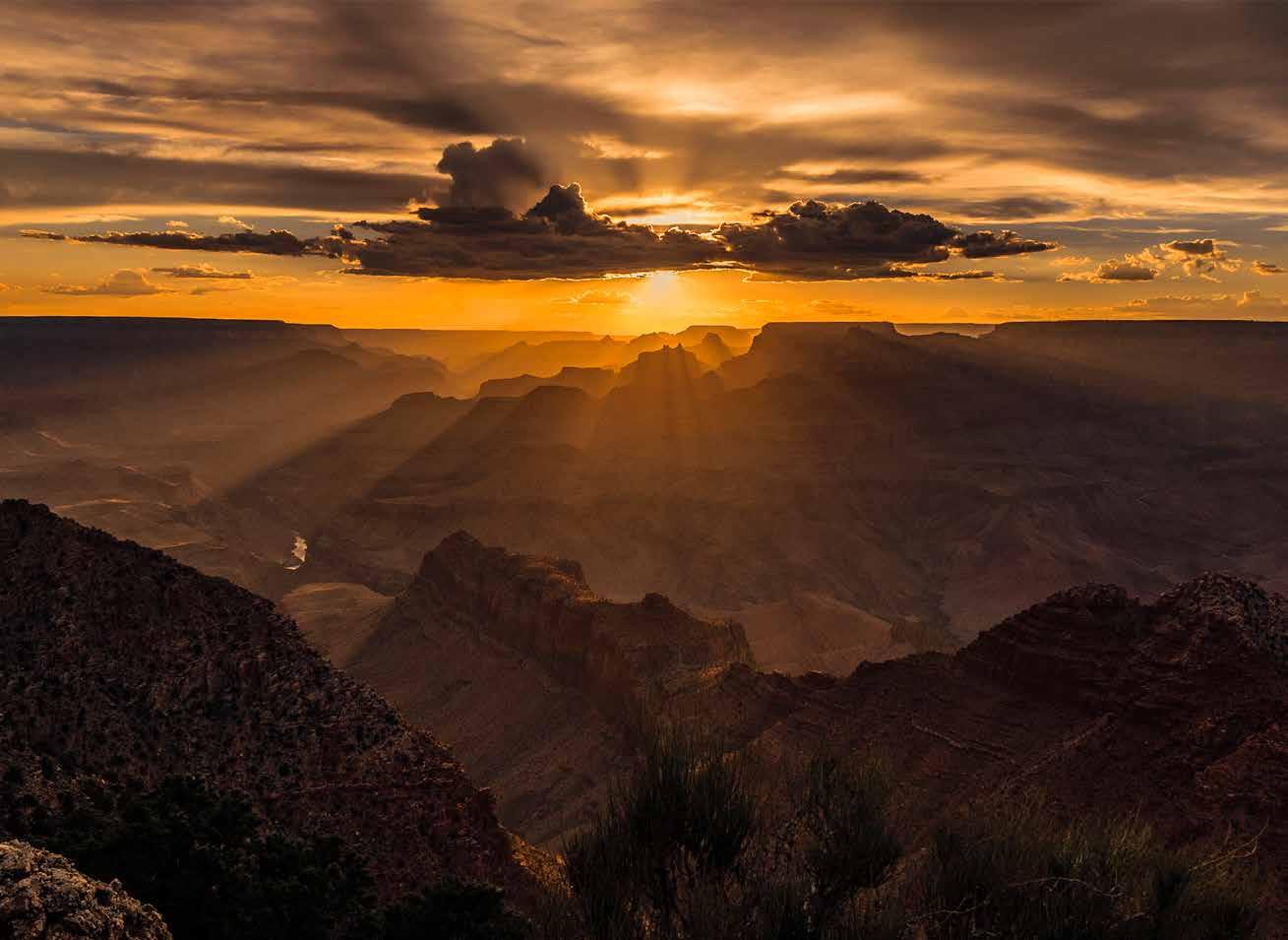
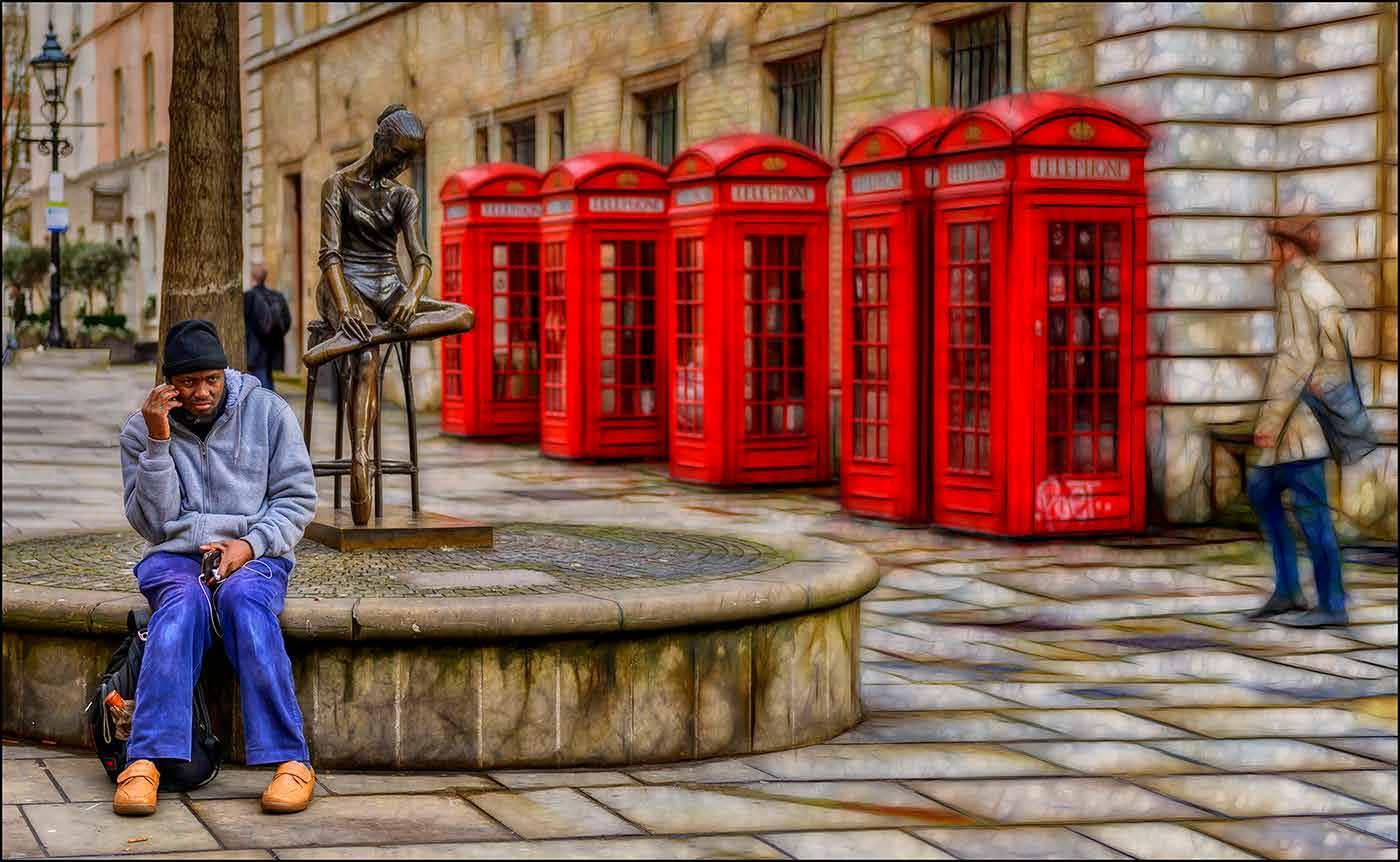
...and a big thank you to this edition’s contributors. We welcome submissions from Creative Eye Group members, so if you have a distinction success, story, image or a project that you would like to share, please let us know. Feedback is very welcome and gratefully received, please send your comments and suggestions to the editor.
Steve Varman (Editor) creative.publications@rps.org

Website www.rps.org/special-interest-groups/creative-eye
Social facebook.com/groups/rpscg flickr.com/groups/rps-creative
